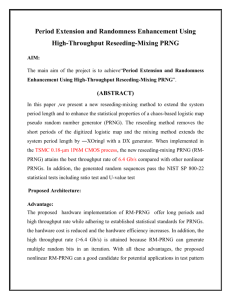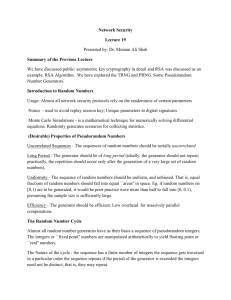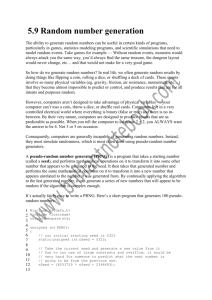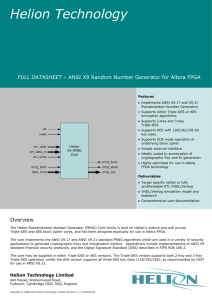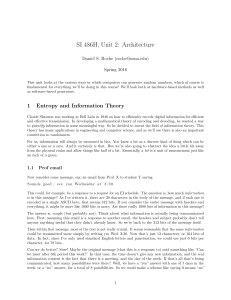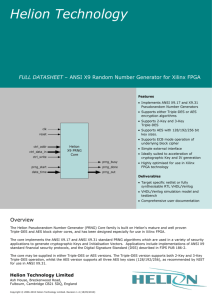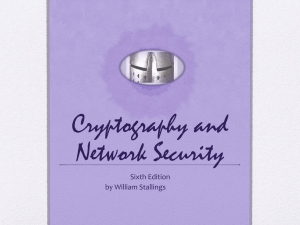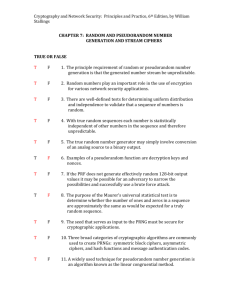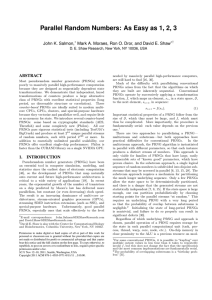random
advertisement
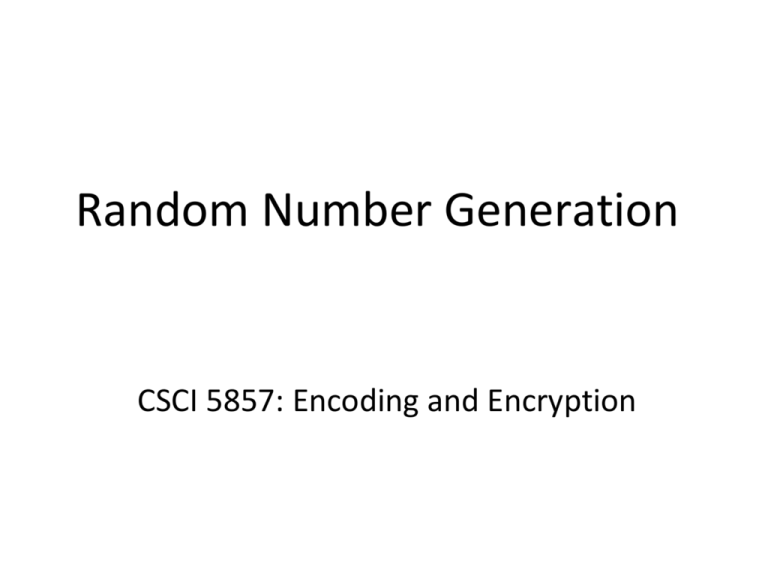
Random Number Generation CSCI 5857: Encoding and Encryption Outline • Desired properties of a random number generator • True random number generators • Pseudo-random number generators (PRNGs) – Linear Congruential PRNG – DES-based PRNG (ANSI X9.17 ) – AES/CTR-based PRNG – RSA-based PRNG (ANSI X9.62) – Hash and MAC-based PRNG Random Number Generation • Crucial to key generation • Crucial to many other applications (games, etc.) • Desired properties: – 1 or 0 equally likely to be generated – Impossible to compute value of next random number based on previous values intercepted – Takes as long as possible before repeating cycle of values (inevitable in long run) • Key: Good encryption/hashing functions have these properties! True Random Number Generators • Based on some random physical process – Coin flip, particle physics, etc. • Generally based on some physical process read in through peripherals – – – – – PGP: random user keystrokes TrueCrypt: random mouse movement Linux: mouse and keyboard activity, disk I/O operations Intel: chip samples thermal noise across resistors Other ideas: samples of sound/video input • Usually run through hash algorithm to insure good distribution of values Pseudo Random Numbers • Based on some mathematical formula / computer algorithm • Iterative: Next value based on previous value xi = f(xi-1) • Usually require initial seed IV x0 = f(IV) • Often include time/date for some true randomness Linear Congruential PRNG • Simple modular arithmetic: xi +1 = (axi + b) mod n – Commonly built into programming languages – Common values: • n = 231-1, a = 27, b = 0 • Generate all positive 32-bit integers with no repetition Linear Congruential PRNG • Not secure – Common values of n, a, and b are well known – Given a few xi, can easily compute where you are in sequence “I know what hand is coming next!” ANSI X9.17 PRNG • Based on Triple DES – Initial Vector IV (initially seed) – Current date/time – 112 key bits • Cipher block chaining mode used – Next IV based on previous result • Cracking sequence requires cracking 3DES to compute initial IV CTR-Based PRNG • Based on stream of bits created by CTR mode • Can use any block cipher (AES, DES, etc.) – v = seed – while (bits still needed) • block = E(k, v) • v = (v + 1) mod 2128 • output = output + block ANSI X9.62 PRNG (Micali-Schnorr) • PRNG based on RSA – Generate p, q, n, and e as in RSA • Current random number = k least significant bits of encrypting xi • Remaining bits r fed into next state – Start with seed x0 (r bits) ANSI X9.62 PRNG (Micali-Schnorr) • Security similar to RSA – Adversary would have to solve modular logarithm problem to find xi – Adversary must find to determine next random number generated Hash-based PRNG • ISO 18031 PRNG – – – – Initial vector V Each cycle V += 1 Hash V Take n least significant bits • Secure if hash function secure – Can’t determine V from current random number MAC-based PRNG • IEEE 802.11 PRNG – Initial vector V – Hashed with MAC using key K – Result is also next V • Adversary would need to know K in order to duplicate sequence
